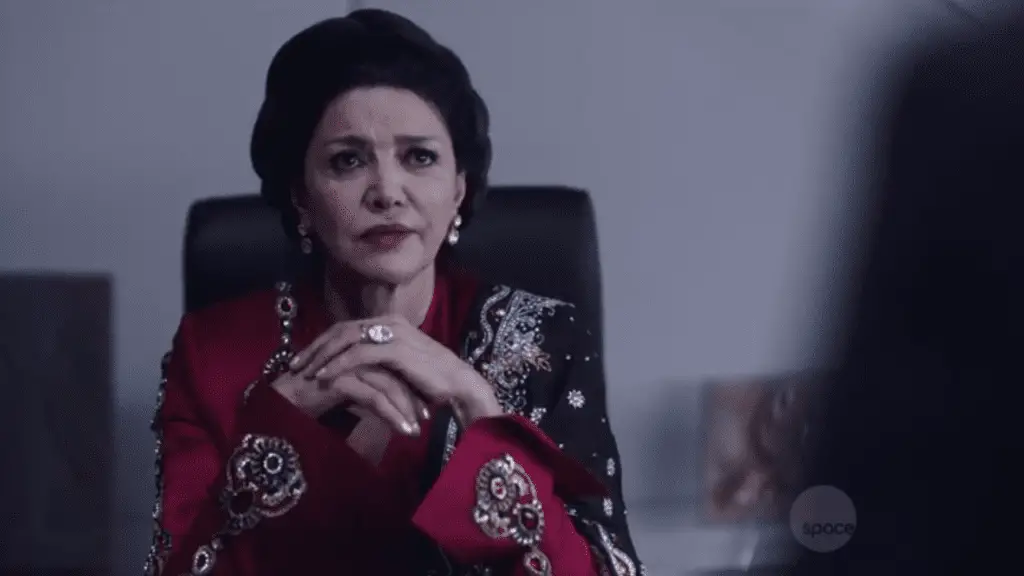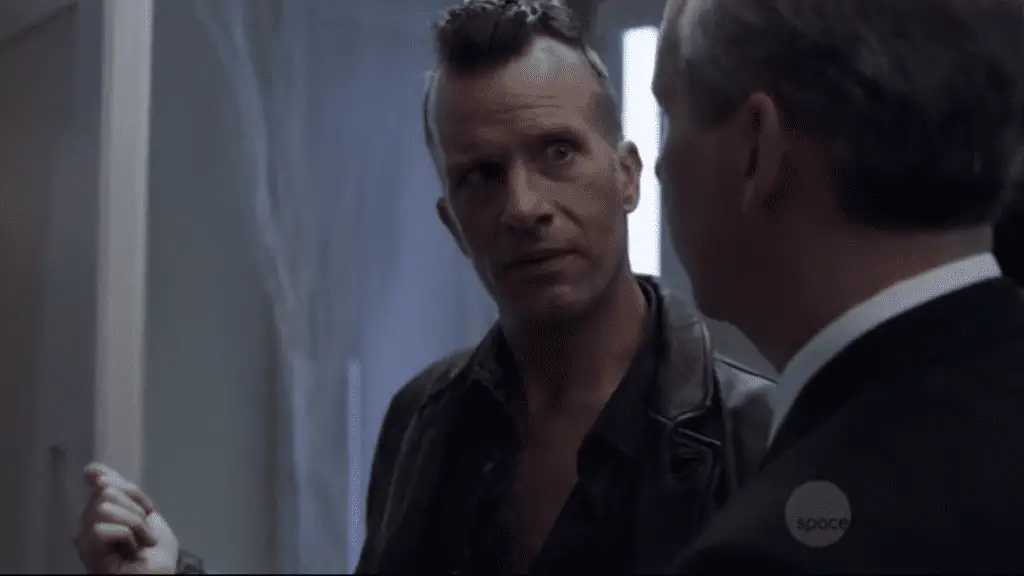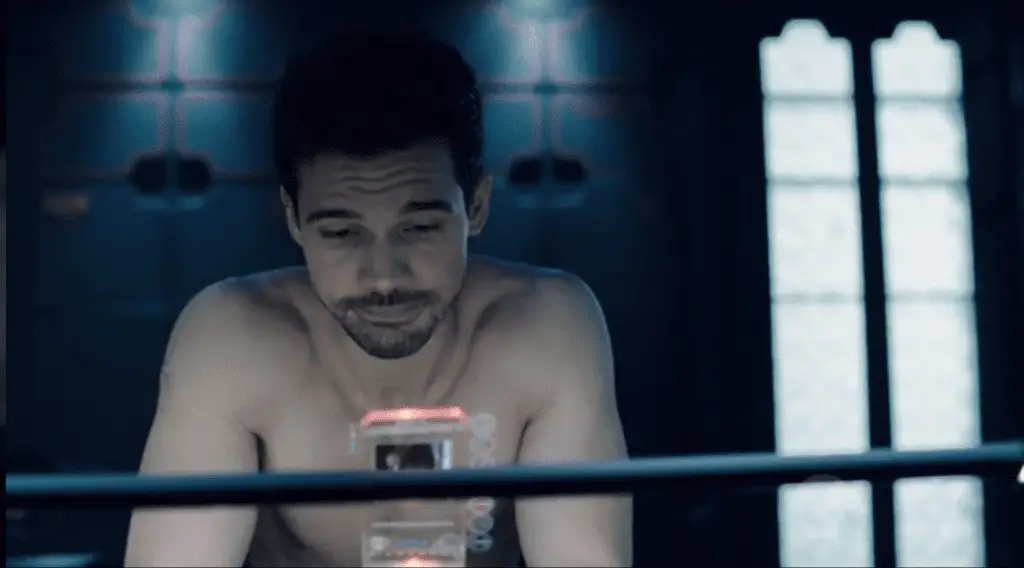The Expanse is not only a very successful TV show. It is based on a book series by James S.A. Corey, a pen-name actually used by two authors who work on it together. One of them is a close colleague of George R.R. Martin, and his influence can sometimes be seen, especially in the structure of the books. The books are great, the show is great—but is the show great even compared to the books? That’s always the question. So let’s take a detailed look.
The following contains minor spoilers for both the book and the show.
Mostly, the differences in the adaptation are subtle changes. In fact, I distinctly feel reminiscent of Game of Thrones, where subtle changes in characterization in season one were the first signs of much deeper problems about to come in future seasons. We already know that The Expanse differs from the books more deeply in season two. Given this parallel, we can only hope the gap won’t continue to widen.
Not that all the changes are to the worse. The most outstanding change for the better is without a doubt including Chrisjen’s point of view in the first season. She is absent in the first book, Leviathan Wakes, which actually covers season one and half of season two. It’s not only that they included a protagonist who wasn’t a white man (it’s doubtful whether we can call Miller white in the books; given the in-universe system of oppression, he is hardly counted as one of the privileged, but on the show, he is portrayed by a white man and for obvious reasons, his physiological differences as a Belter are not really visible, so his show version is much more so). It is also that they picked her perfectly.

Holden and Miller form a good counter-balance to one another. The Earther and the Belter, the hero and the anti-hero. They are each other’s twisted mirrors. It could perhaps seem that including anyone else would disturb this balance. And yet Chrisjen fits it like a piece you never knew you were missing. The pragmatic realpolitik Earther woman is yet another kind of protagonist who puts the antics of our two other, very masculine, heroes into just the right kind of perspective. Having her in season one was an excellent adaptational change.
Speaking of the female point of view, there is also something the show did worse than the books, and that is Julie Mao. The entire prologue of the book is from her point of view, and in its course, she becomes much more real than in the short scene she is given at the beginning of the show. The result is that even later, when Miller discovers things about her, it is easier to connect them to the real woman you met at the opening of the book. In the show, she becomes a bit too much Miller’s fantasy, as I’ve complained before, because she was never real to the viewers in the first place.
It’s fair to admit that some things are just harder to do on a TV show. We are in Julie’s head for a couple of pages and we really feel her. It’s harder to do that in a visual medium, especially without dialogue. Other weaknesses in the first season, too, can be chocked to by this, like the crew of the Rocinante‘s trauma from everything that happened to them.
You’d expect the things a visual medium is more suited for to to be better, though, to compensate. Unfortunately, that doesn’t really happen. Some things, of course, would work great in a visual medium but are too expensive to be really tenable, or too impractical. The most obvious one would be the clear visual distinction between Belters, Earthers, and Martians. You can tell where a person is from just by looking at them, which is a very important aspect to the in-universe racism. Passing privileges are a rarity among Belters—or Inners, if we’re talking about trying to survive among radical OPAs. All this would look fantastic in a visual medium, but adjusting the look of actors digitally in post-processing would be too expensive for a TV show like this one.

The other option they had was simply hiring tall and slim actors for all Belter characters, or at least for all important ones. I have less understand for why they chose not to do this. As I said, the visual difference is an important aspect of the universe of The Expanse. As much as I love the actors who are on the show, I’m not ready to believe they could not have found a taller actress for Naomi, who is supposed to be two meters tall, or for Diego or Anderson Dawes. And it could have helped the worldbuilding significantly.
My other main visual objection is the dark tone The Expanse decided to set. When I think of Ceres on the show, my main memory is dark corridors where you can barely see what’s happening. But the visual painted by the book is quite different. It’s brightly lit white tunnels that are badly maintained, dirty and sprayed with graffiti in the poorer parts of the asteroid. Utilizing this visual could have given the show a unique feel, the kind of “cheap plastic gritty” that would be different from the ubiquituous “dark metal gritty” of many scifi shows. Instead, it blends in with everything else we see on TV.
Some other worldbuilding issues are unrelated to the visuals. The escalating Belt–Mars tension is shown more clearly and the gradation is felt more in the books. Perhaps this is partly thanks to the streamlined alternating structure between Holden’s and Miller’s chapters. But still, it’s an important aspect of the books, and it got somehow muddled on the show.
Related to this is the issue of the size of the world. The above-mentioned tension is built, among other things, by systematically mentioning a large number of incidents happening across the solar system. As a reader, you are well aware it’s not just the few things you saw. Similarly, the Star Helix offices, the company that keeps peace on Ceres, are shown to be truly large in the books. On the show, it looks like it’s about fifteen cops keeping peace there. There are other instances of the same. This, again, is a budget thing. It’s not truly the show’s fault. But it is an aspect that takes away from the experience of its world nonetheless.
The other worldbuilding problem is with Mars. I have been complaining even while watching the show that Mars desperately needed a sympathetic character to represent them. Now, reading the book, I feel the absence even more because the Rocinante crew certainly has much more of a negative experience aboard the ship on the show than they do in the books. There’s mind games and turning them against each other on TV. In the books, they are nothing but pleasant, and you feel much deeper regret for the eventual deaths that happen there than you do on the show.

As to the two protagonists themselves, there are subtle changes to their personalities—especially Holden’s—which, I fear, manifest more obviously later on in the show.
Holden is made more unequivocally heroic in the traditional sense, and the aspects of him that are foolishly rash are pushed into the background. Others are made into worse people, too, to make him look better, a classic strategy used to help ‘personal favourite white boy’ characters. In the books, Holden does not need to secretly log the distress signal to trick the Canterbury into following it. The captain gives the order to follow himself, with only a little push from Holden, and the push is chiefly there as a bit of a play on the crew.
We also do not see Holden selflessly rejecting a command position. He is the executive officer of the Canterbury, and he even makes jokes about liking the captain’s chair. After the Canterbury is blown up, he makes a rash and stupid decision, and I don’t mean the broadcast that’s on the show as well.
I could go on. Holden in the books, while still being played as your typical hero, is less of a boy scout than the one on the show.
Miller, on the other hand, I feel the show got pretty much right. The most significant change in his story is perhaps his Earther partner, who got a touching background for some reason. Miller himself, however, is very faithful. In fact, I think his infatuation with Julie works even better on the show. This is one place where the visual medium is at an advantage again. His visions of Julie make more of an impression than mentioning how he thinks of her a few times.
The other changes are mostly intruiguing shifts in characterization where I wonder at the motivation more than actually find fault with them. Amos, for example, talks a lot in the books, while he is closer to the strong silent type on the show. Fred Johnson was made into less of an overtly friendly man. Here I believe I understand the reasoning—his book characterization is rather subtle and perhaps they thought it would be too much for TV viewers—but it means he inevitably loses some of his layers.
I’m also tempted to say Anderson Dawes is less sleazy in the books, but that might be my season two experience projecting onto the first one, so I will leave that one alone.
All in all, most of the things I describe are tiny details. The most significant changes are those done to Holden, and those relating to him, on the negative side, and the inclusion of Chrisjen on the positive one. The worldbuilding could have been a little more faithful, but apart from that, as far as this season goes, it was a roaring success as an adaptation. And it’s worth pointing out that even most adaptations that are considered ‘good’ tend to fall apart when you take a closer look, like with the already mentioned first season of Game of Thrones or Lord of the Rings. Overall, the first season of The Expanse holds up to examination exceedingly well.
See you in a few weeks, when we consider how the second one did.

